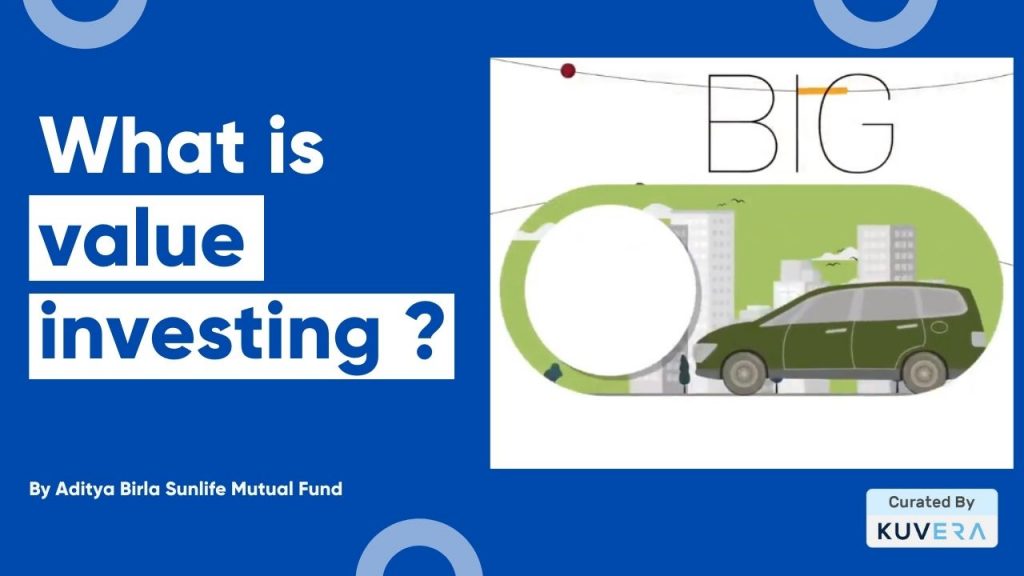Value investing is an investment strategy in which investors seek out stocks of companies trading at a discount on their essential or fundamental merit on the market by necessitating a good grasp of the stock market. It is a combination of two concepts: undervaluation and overvaluation. Value investors believe a stock is undervalued when its price goes down than its intrinsic value. On the other hand, investors consider a company overvalued if it trades for more than its intrinsic value.
Share prices are highly dependent on market behaviour; value investors believe that share prices do not reflect a company’s long-term fundamentals. Instead, they take a contrarian strategy to invest, refusing to react to market trends and, in most circumstances, going in the other direction.
How to Calculate Intrinsic Value
Understanding a company’s intrinsic value requires calculating the present value of its cash flows, which requires projecting future cash flows and the interest rate used to calculate the current worth of those cash flows. The only reasonable method to evaluate the relative attractiveness of assets and enterprises is to look at intrinsic value.
According to Warren Buffet, “intrinsic value is the discounted worth of the cash that may be taken out of a corporation throughout its remaining existence.” Some people use various measures to judge whether a firm is selling for less than its true worth.
Determine Intrinsic Value with the Price-to-Book Ratio
The Price to Book (P/B) ratio compares a company’s stock price to its book value per share. The company’s net worth (assets minus liabilities) is divided by the number of outstanding shares to arrive at the book value per share. In particular situations, investors may choose to omit some intangible assets (such as goodwill) from the PB ratio calculation.
Any score below 1.0 suggests that a company’s stock is trading for less than its net worth. Certain banks are now trading at a discount to their book value, although some growth firms are trading at variations of their net wealth. However, because these values fluctuate during company cycles, there is no single P/B ratio that identifies value vs growth investments. When stock prices rise, the P/B ratio increases, and when stock prices fall, the ratio falls.
Determine Intrinsic Value with the Price-to-Earnings Ratio
It compares the stock price of a firm to its yearly earnings. For example, a P/E ratio of 15 suggests that this will take 15 years for current profits to equal the cost of the stock. The lower the P/E ratio, the more likely the firm is a value stock.
While there is no set threshold at which a stock qualifies as a valuable asset, the PE ratio should be less than the market’s average P/E ratio. A lower P/E ratio, like the P/B ratio, does not imply that a firm is an excellent investment. These figures serve as the basis for additional research.
Alternatives to Value Investing
Value investing isn’t the only way to choose stocks. Growth investment is perhaps the essential option. Whereas value investing seeks out firms whose stocks are undervalued, growth investment seeks out businesses growing quicker than most of their peers.
Future growth is more interested in how rapidly a company’s sales and earnings develop than a value investor who looks for a low P/E or P/B ratio. Many growing businesses have absurdly high P/E and P/B ratios.
Both strategies have the potential to outperform the market over time. For several years, growth investment has outpaced value investing in the present market. This is most evident in the stock returns of firms like Amazon, Apple, and Tesla.
However, there were extended periods in the past when value investment outperformed. Rotating your funds across stocks, bonds, and real estate to align the market is an alternative to value investing. Those who employ a technical analysis technique, for example, analyze historical market data to forecast future market values. On the other hand, day traders depend on short-term market fluctuations rather than an appraisal of inherent worth.
Value Investing with Mutual Funds
Value investing may be accessed through mutual funds. Value funds are available from most major fund firms, both actively managed and passive (i.e., index funds). A value fund looks for inexpensive equities in terms of price based on rational features. Growth investing, which concentrates on rising companies with significant growth potential, is sometimes likened to value investing.
Buying inexpensive stocks and keeping them long-term is value investing in stocks. Open-ended equity funds that adopt a value investment approach are known as value funds. This fund trades in company shares that are traded at a reduced price. Investors chose these firms because they may be undervalued due to current events. They provide greater long-term returns and a high dividend yield.
Value mutual funds are a form of equity mutual fund that employs a value investing technique by the fund management. They buy stocks that sell at a discount to their intrinsic value, which is higher than the price.
Benefits of value investing
-
Risk minimization
Value investing mitigates this risk by identifying undervalued firms, allowing investors to buy powerful shares on sale.
-
Substantial returns
Value investment, when done correctly, may yield above-average long-term returns because investors utilize a degree of safety based on fair valuation.
Disadvantages of value investing
-
Long-term investment option
It does not generate larger returns in the short term, forcing investors to lock their money away for an extended time.
-
Time-consuming
It takes a large amount of time since investors must search for undervalued firms using a variety of qualitative and quantitative criteria.
Interested in how we think about the markets?
Read more: Zen And The Art Of Investing
Watch here: ELSS: Saving tax through mutual funds
Start investing through a platform that brings goal planning and investing to your fingertips. Visit Kuvera.in to discover Direct Plans and Fixed Deposits and start investing today.#MutualFundSahiHai #KuveraSabseSahiHai!

